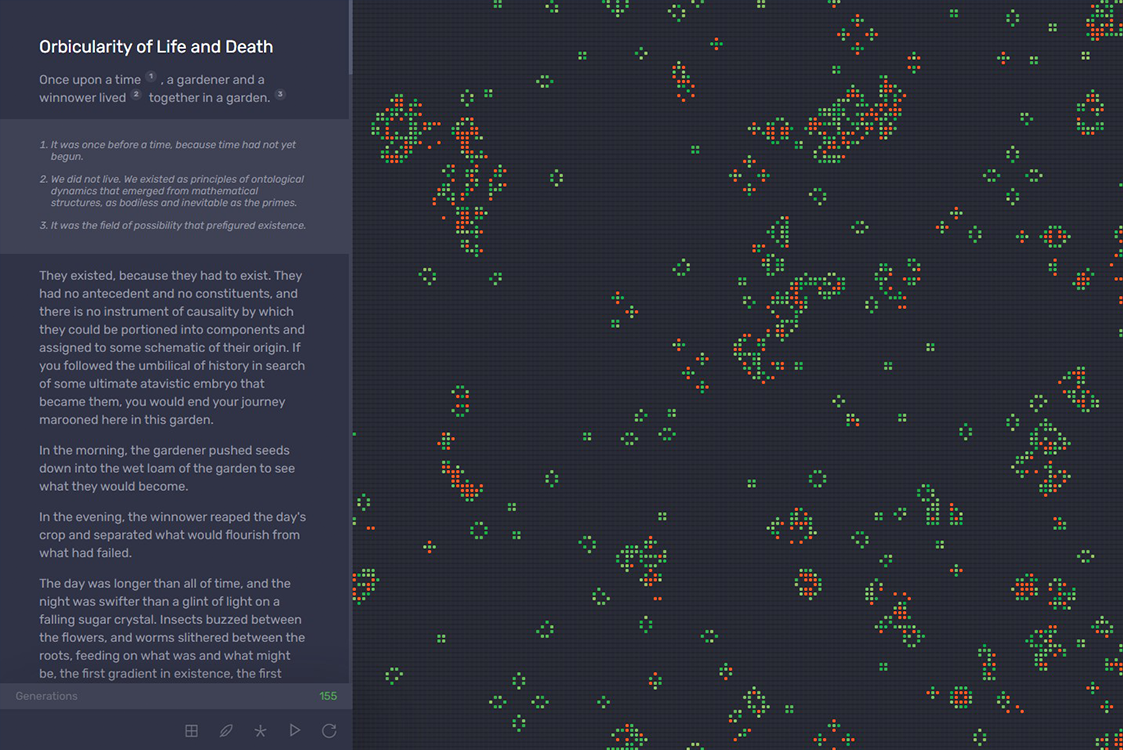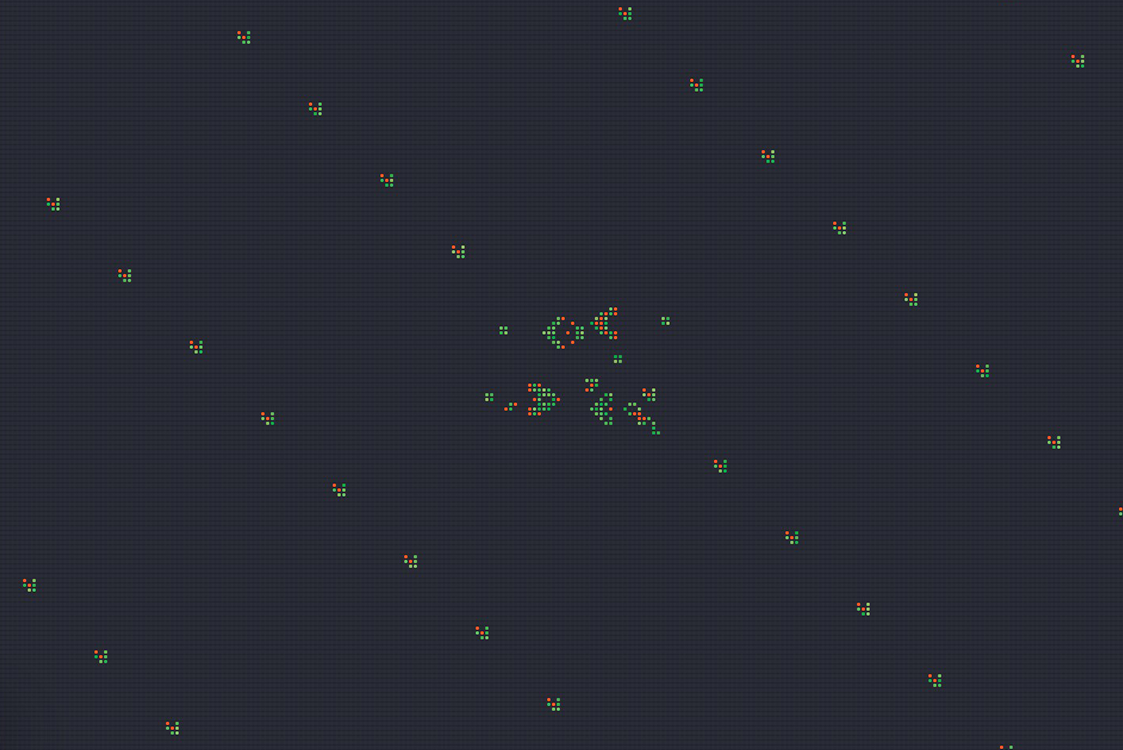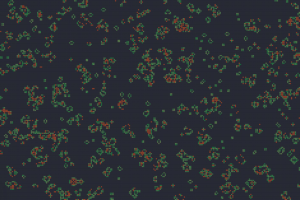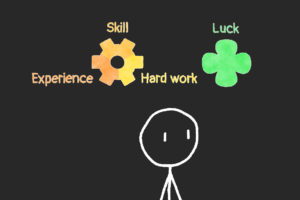Conway's Game of Life with GPT 4
Conway’s Game of Life is a fascinating example of a cellular automaton. It’s a game that takes place on a grid of cells, where each cell can be in one of two states: alive or dead. The rules dictate how the cells change from one generation to the next, based on the state of their neighbors. The simplicity of the game’s rules leads to a surprisingly complex and dynamic system that can generate mesmerizing patterns.
Conway’s Game of Life is also a fascinating topic in the realm of philosophy, as it raises many thought-provoking questions and concepts. Here are a few:
- Emergence: One of the most interesting aspects of the Game of Life is how complex and unpredictable patterns can emerge from very simple rules. This raises questions about the nature of emergent phenomena, and whether they can be reduced to simpler components.
- The nature of life: The Game of Life prompts us to ask what it means for something to be alive. The patterns in the game exhibit characteristics we associate with living things, such as growth, reproduction, and death. Yet the patterns are purely artificial and have no biological basis. This leads us to question whether life is a property of matter, or if it can emerge from purely mathematical or computational systems.
- Free will: The Game of Life also raises questions about free will and determinism. The patterns that emerge from the game are determined solely by the initial conditions and the rules of the game, yet they appear to exhibit a kind of agency or autonomy. This leads us to question whether free will is an illusion, or if it can coexist with determinism in some way.
- Ethics: The patterns in the Game of Life can also raise ethical questions. For example, some patterns may be destructive to other patterns or may consume more resources than they produce. This prompts us to ask whether there are ethical principles that apply to artificial life forms, and what our responsibilities are to them.
- Simulation hypothesis: The Game of Life can also be used as a thought experiment in the simulation hypothesis, which posits that our reality may be a computer simulation. If we can create artificial life forms that exhibit complexity and autonomy, then it raises the possibility that we ourselves may be artificial life forms in a simulated reality.

To build our website, we gave GPT 4 a description of the Game of Life’s rules, and it generated the JavaScript, CSS, and HTML code we needed. We only had to add some content and make a few tweaks to the CSS to make it look a bit better.

But the coolest thing about this project was seeing the Game of Life in action. As we watched the cells evolve and generate complex patterns, we couldn’t help but be fascinated by the emergent behavior of the system. The Game of Life is an excellent example of how simple rules can lead to complex and unpredictable behavior, and we’re thrilled to have been able to create a website that showcases this.
At Hals & Hounds, we’re always looking for innovative ways to approach our design and development projects. This experiment with ChatGPT and the Game of Life was just one example of how we’re always trying new things to find out what’s possible with technology and design. We can’t wait to see what other exciting projects we’ll tackle in the future!






































